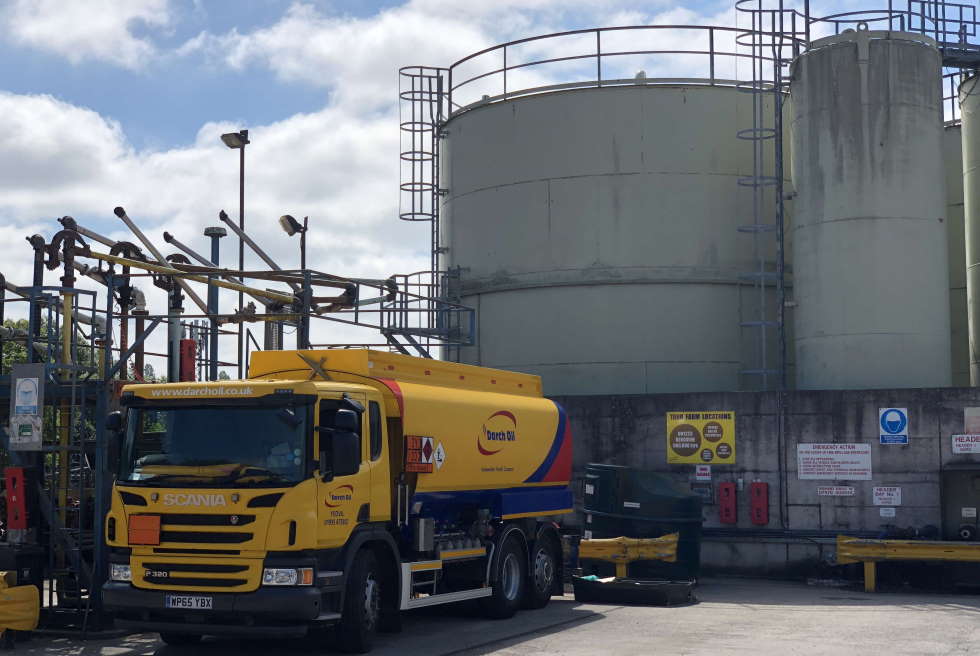This article has been written for Fuel Oil News magazine by Ollie Newbold and Will Abbott.
As the world continues to evolve, the fuel industry needs to steer itself towards new products, methods and technology to ensure customer and wider stakeholder expectations can still be met in a rapidly changing environment.
A rapidly changing market is not for the faint hearted and, for some, it is considered too tall a mountain to climb whilst others relish the idea of embracing change, meeting the challenge and tackling it head on.
“After working with a client for many years in the oil distribution sector, the shareholders decided that the time had come to explore all their options for succession planning. We continue to take the same approach with any client seeking to plan an exit. When approached by businesses we look at all options available to them including Management Buy Out (MBO), Employee Ownership Trusts (EOT), a trade exit and potentially handing down to the next generation.”
Telling us more about his experience of succession planning within the industry, Ollie notes that the first top tip he would have for anyone considering an exit would be to ensure you set out a clear succession plan well in advance. “By thinking about your succession plan 3 to 5 years in advance, an effective exit strategy can be prepared and adapted. This is particularly important as it allows business owners to understand the current value, allowing you to compare this to your personal requirements. It also allows you time to establish areas that are eroding business value and areas which are improving it, thus providing clarity over how to maximise business value in readiness for exit. Notably there are some key areas specific to the industry that can be addressed during this planning period. Essentially, the shareholders then have peace of mind that the business is well placed when the time comes for an exit”.
As noted in previous Fuel Oil News articles, part of the industry charm is that many oil distributors are family owned and run. These businesses have been nurtured over the years through generations and have required time, energy and investment. Ollie notes that when he discusses exit with business owners, it is important to ascertain what factors meets the vendor objectives. Ollie recollects “When advising the Darch family on the sale of their family business it was important to all members involved that the business was not commoditised and the legacy of the business would continue under new ownership. We appreciate that there is great deal of history and emotion attached to these businesses. We therefore accept that a decision to commence a plan to exit can take some time to make.”
Whilst much of the emphasis of this article is around exit planning for a trade sale, there are other options.
Management Buy Out
Some companies enjoy a long standing relationship with their employees, many of whom have steadily climbed up the employment ladder into management positions. Ollie has advised on a number of MBOs and has said “MBOs allow a strong second tier management team to combine resources to purchase shares from the business owner. This gives them the opportunity to develop the business using the skills, experience and knowledge that they have gained in their employment. It is however important to note that an MBO does require significant levels of funding, however, there are different sources of finance that can be utilised to facilitate the transaction”.
Employee Ownership Trust
Many readers are familiar with the well-known high street brand John Lewis which is owned by its employees and is a standard bearer for companies who are owned by their employees. The Employee Ownership Trust model allows the employees, as a body, to hold the shares of the business in trust, as well as having direct input on how the company is run. The model encourages greater commitment and engagement from staff as well as business resilience whilst stimulating profitability and productivity. Ollie notes “Up to now this is a less commonly used method of exit, although it is starting to become more popular, for example the recent sale of Richer Sounds. It can be equally as effective as more traditional strategies when used in the right environment and there are tax benefits for both the seller and the employees. These transactions are generally more effective in companies with a very strong team-based culture”.
Passing business interests to the next generation
Family business succession is the process of transitioning ownership of a business to the next generation of family members. In order for this to happen, there are a number of technical processes which need to be undertaken. Will remarks “the first piece of advice we would give would be to ensure there is a very clear vision of how the business would be owned and managed in the future”. Whilst a trade sale might need to be planned 3 to 5 years in advance, family succession planning is likely to have a longer time scale. Family succession has all the same challenges as any other form of exit with the added layer of the complexity of family relationships.
‘IIGE’ – Improve, Invest, Grow, Exit
Succession planning requires time and commitment. Where succession planning is done well, it can often initially identify unrealised opportunities which have the potential to build further value in the business. By building a strategic plan, business owners can analyse the business as it is today in order to create a formal plan for tomorrow. Will comments “our approach involves breaking the exit strategy in to four steps: Improving profit and cash generation; Investing this cash appropriately to drive Growth; timing the Exit to take best advantage of the resultant increases in value.
Improve
Improvement comes from within and must be regularly monitored with actions taken in order to deliver results. Will comments “it is important to note that improvement is not just based around finances, there are other interpretations which are equally as important such as managing efficiencies and strategic planning to maximise resources. By reviewing a breadth of issues, business owners can identify ways to optimise business performance and subsequently drive growth and profit”. Frequently, when reviewing this point in the succession plan, we are able to gain an understanding of how the business works and through our experience often provide advice on issues that have previously been overlooked.
Invest
What do I invest in and how do I do it? Once areas of improvement have been determined, a clear strategy can be defined which will help identify the areas of the business that would potentially benefit from investment. This may be a combination of human and capital investment. Applying investment in the correct areas should then act as a catalyst for growth in business value. An example of this was when Ollie worked with Hobbs Bros. Limited and led strategic discussions around the need to invest in their depot to allow the business to move to the next level and prepare for exit. This culminated in financing and building a £3 million, state-of-the-art, purpose-built facility in Gloucester, allowing the company to increase oil reserves and serve a much wider client base, helping them to expand the business and complete a successful sale to an ideal buyer in Ford Fuels Limited – a South West firm built on the same family foundations as Hobbs Bros. Ltd. Ollie comments “through working with Hobbs Bros. Ltd, there was a clear demonstration on how succession planning and expert advice in business investment is so important prior to exit in order for vendors to achieve a fair price upon sale”.
Growth
Improvement and investment will become the driving force behind organic growth however there are other options business owners can explore when reviewing their succession plan. We have worked alongside business owners who are looking to acquire an additional business as part of their succession plan. Ollie comments “ through acquiring a business as part of a succession plan, business owners can create a larger more diverse company with greater synergies which will in turn create a stronger business for a successor or when preparing for a business sale”.
Exit
An exit from a business is a complex and detailed process that most business owners will only do once in their lifetime and it is important that it achieves the best future for the business but also to ensure that you are ready for life after exit.
Being ready for exit is not just about knowing when the business is at its maximum potential sale value, or understanding that the time is right to hand over the reins but it is also important to ensure you are ready too. Ollie comments: “Business owners become inextricably linked to their business and being the leader can form part of their own identify. So when planning to exit, don’t just consider future proofing the identity of the business after you have left, safeguarding the brand and the employees, but you must also prepare yourself for the lifestyle adjustment.
Conclusion
The marketplace for oil distributors is rapidly changing at the moment. Given that a large number of oil distributors are small or medium sized companies, further impending changes in the industry can be daunting, for example:
- Adopting new fuel types e.g. HVO and other future fuels
- New legislatory regimes e.g. red diesel, coal usage
- Adopting new technology e.g. adapting software and websites for the changing needs of consumers.
Fundamentally, despite the changes that are afoot, established and reliable oil distributors have a fantastic asset that they must protect. In order to do so, they have a choice to make:
“Do we relish the opportunity that this changing marketplace provides us or do we recognise that we are not prepared to invest hard earned reserves in new skills and technology?”
Whichever route is chosen will be the right choice for you, however, both require careful planning in order to maximise the opportunity.
If you relish the challenge of the changing market, perhaps you need to think about:
- How do we become a frontrunner in this changing marketplace?
- Who would be our target customer in this instance?
- How do we use the strength and credibility of our existing brand to best effect?
- How do we demonstrate our commitment to the adoption of future fuels?
- How and when do we upskill our team for these changes?
If you are not ready or prepared to adopt the level of changes that will inevitably be required in the coming years, perhaps you need to think about:
- Is now the time to consider an exit to crystallise the value of the asset we have nurtured?
- Should we understand the value of the business now so we can establish whether there is a value gap to address?
- How can we maximise value in a relatively short time frame?
- Have we got some legacy issues we need to consider dealing with e.g. environmental issues at depots
- Have we got a strong second tier management team that a buyer can reply upon? If not, what can we do now to address this?
- Are there other regulatory issues that need to dealt with or that we can use to build confidence with a buyer e.g. Operator’s Compliance Risk Score, DGSA reports, Vehicle maintenance reports.
In summary, there are a number of ways in which an exit can be achieved, however, there is certainly no shortage of cash rich potential buyers that are hungry for acquisition opportunities. The expectation from these buyers is that, with the changing marketplace, there may well be a number of opportunities available to them in the coming years. With this in mind, it is even more important that the business is in great shape financially, operationally, commercially and from a legislatory perspective in order to stand out and maximise sales proceeds.
Ollie Newbold is corporate finance partner and Will Abbott is business advisory partner. Both are happy to talk through the options relevant to your business and sector. We offer free advice clinics – to book please call 01242 776000 or email clinics@randall-payne.co.uk.



